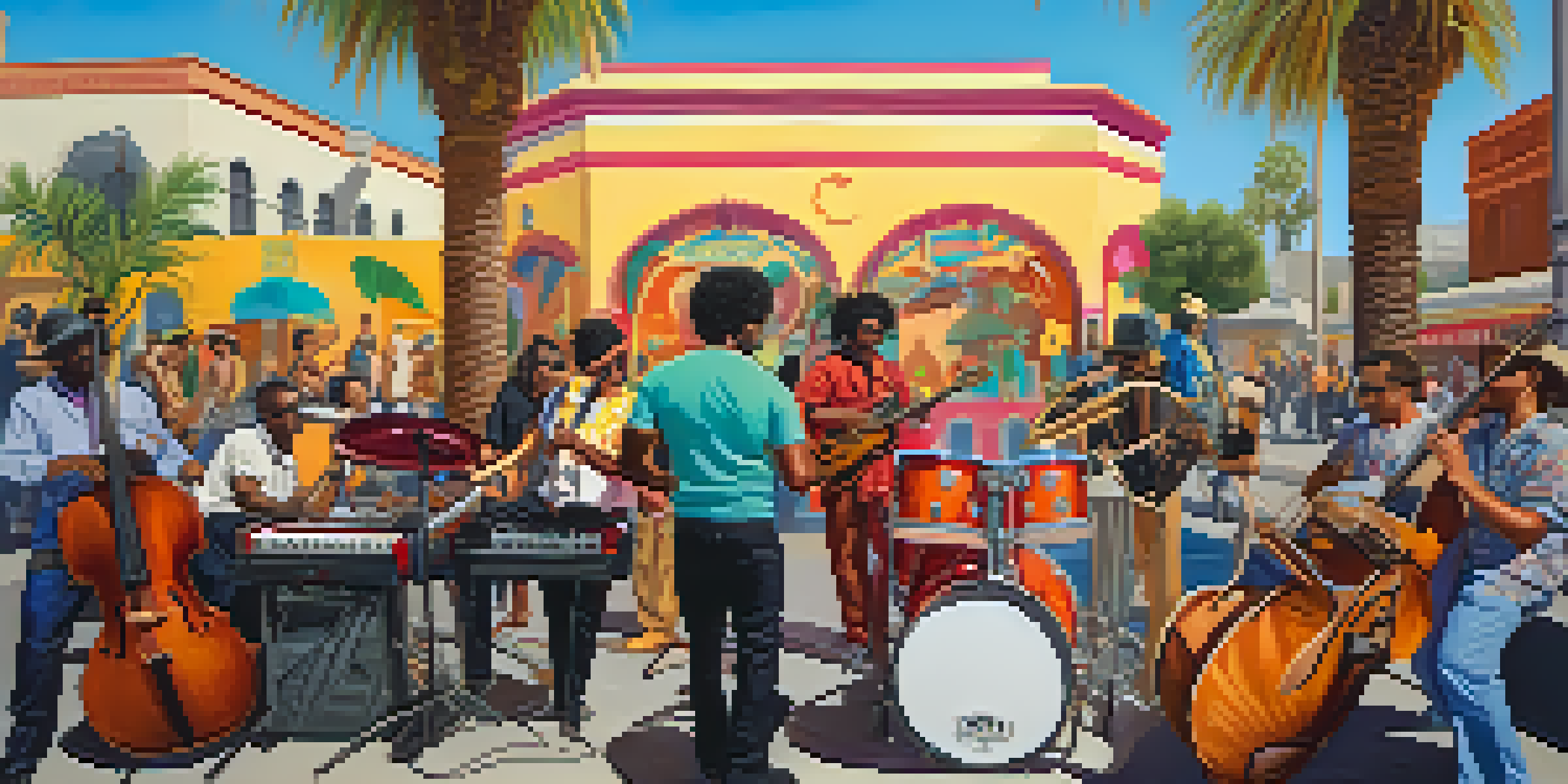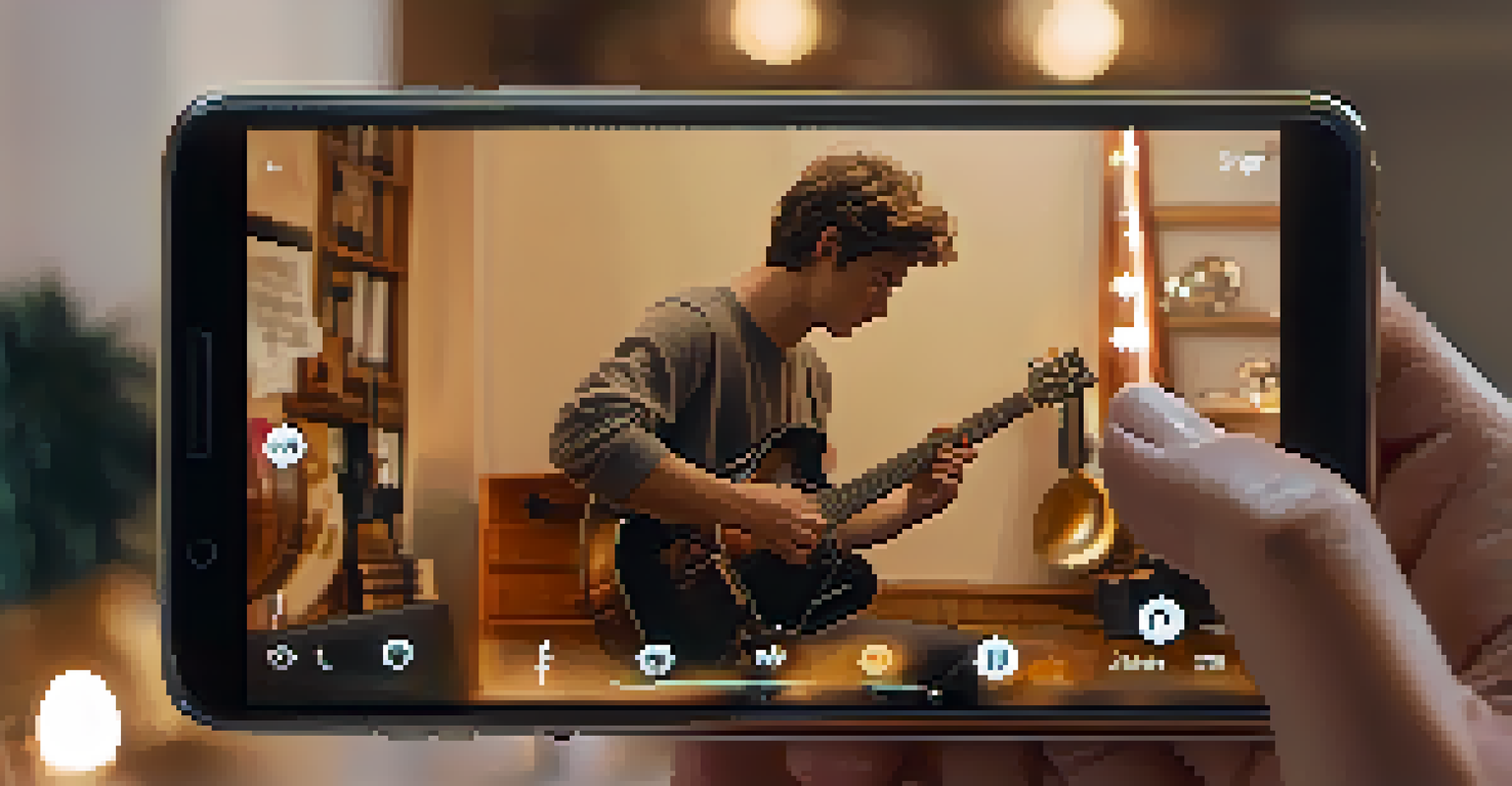The Influence of YouTube on LA's Music Industry

YouTube: A Game Changer for Music Discovery
YouTube has revolutionized how music is discovered and consumed, especially in LA. With millions of users worldwide, it serves as a powerful platform for artists to showcase their work, reaching audiences that traditional media often overlooks. Think of it as a modern-day radio station, where anyone with talent can gain exposure and connect with fans directly.
YouTube is a powerful platform for artists to showcase their work, reaching audiences that traditional media often overlooks.
In Los Angeles, where many artists aspire to make it big, YouTube provides a level playing field. A small indie band can go viral overnight with the right video, gaining traction that might have taken years through traditional record label routes. This democratization of music discovery is reshaping the industry, allowing diverse genres and voices to emerge.
Moreover, YouTube's algorithm plays a significant role in this discovery process. By analyzing viewer behavior, it recommends music videos tailored to individual tastes, making it easier for users to stumble upon new artists. This personalized experience fosters a culture of exploration, encouraging listeners to venture beyond their usual playlists.
The Rise of Independent Artists on YouTube
Independent artists are thriving on YouTube, often finding success outside the traditional label system. For many, the platform is a launchpad, allowing them to build an audience and generate revenue through ad shares and sponsorships. This shift empowers creators to maintain artistic control and connect authentically with their fans.

Take the example of artists like Billie Eilish, who gained fame through her DIY approach on YouTube. She and her brother Finneas uploaded music from their bedroom, captivating millions without a major label's backing. Their story illustrates how YouTube can amplify unique voices, making it a vital tool for aspiring musicians.
YouTube Transforms Music Discovery
YouTube has democratized music discovery, allowing independent artists to reach wider audiences and gain recognition that traditional media often overlooks.
The community aspect of YouTube also plays a crucial role in supporting these independent artists. Fans can engage directly through comments and shares, fostering a sense of belonging and loyalty. This interaction not only helps artists grow but also creates a culture where fans feel invested in their journey.
YouTube and the Evolution of Music Marketing
The marketing landscape for music has transformed dramatically with the rise of YouTube. Artists now prioritize creating engaging video content to promote their music, often releasing visually stunning music videos that capture attention. This shift emphasizes the importance of visuals in the digital age, where a compelling video can go viral and drive streams.
The demand for high-quality content on YouTube has raised the bar for music video production.
Furthermore, marketing strategies have evolved to include collaborations with influencers and YouTubers. These partnerships can introduce music to new audiences, leveraging the influencer's reach and credibility. This approach reflects a broader trend where traditional marketing tactics blend with digital strategies to maximize impact.
Additionally, YouTube's analytics tools allow artists and managers to track viewer engagement and understand audience demographics. This data-driven approach enables tailored marketing campaigns that resonate with specific listener segments, ensuring that promotional efforts are both effective and efficient.
The Role of YouTube in Shaping Music Trends
YouTube is not just a platform for music; it actively shapes music trends and genres. Viral challenges, dance routines, and memes often originate from music videos, influencing what becomes popular. For instance, songs like 'Old Town Road' gained massive traction through TikTok and YouTube, showcasing how interconnected these platforms are in setting trends.
Moreover, the platform allows for experimentation with sound and style. Artists can share snippets or remixes, testing the waters for new ideas before a full release. This agile approach encourages innovation, as creators can respond to audience feedback in real-time, adapting their music to fit evolving tastes.
Independent Artists Flourish Online
The platform empowers independent musicians to build their careers outside major labels, fostering authentic connections with fans and maintaining artistic control.
As a result, the music industry has become more fluid, with genres blending and evolving at an unprecedented pace. YouTube has become a barometer for what's hot, often dictating the direction of music trends and influencing mainstream artists to adapt to the tastes of the platform's audience.
YouTube's Impact on Music Video Production
The demand for high-quality content on YouTube has raised the bar for music video production. Artists are investing significantly in cinematography, storytelling, and creative concepts to stand out in a saturated market. This focus on quality not only enhances the viewer experience but also reflects the artistic vision of the creators.
Additionally, the accessibility of video production tools has democratized music video creation. Even low-budget artists can produce visually appealing content with the right smartphone or software. This shift means that creativity and innovation can flourish, regardless of an artist's financial resources.
The rise of platforms like YouTube has also led to new formats, such as lyric videos, behind-the-scenes footage, and live performances. These variations allow artists to engage their audience in different ways, providing a richer and more diverse experience that extends beyond just listening to the music.
The Community and Collaboration Culture on YouTube
YouTube fosters a unique sense of community among musicians and fans alike. Collaborations between artists are thriving, often initiated through the platform. These partnerships not only expand audiences but also create a rich tapestry of musical influences that may not have happened in a more traditional setting.
For example, famous YouTube artists often feature each other in their videos, creating a sense of camaraderie and shared experience. This collaborative spirit leads to innovative music and helps to break down genre barriers, as artists from different backgrounds come together to create something fresh and exciting.
Challenges in Monetization Persist
Despite its advantages, YouTube's monetization policies can be confusing, leaving many artists struggling to earn fair income from their content.
The engagement between artists and fans further strengthens this community. Fans are not just passive listeners; they interact, share, and contribute to the conversation around the music. This active participation cultivates loyalty and encourages a vibrant ecosystem where both artists and fans can thrive.
Challenges and Criticisms of YouTube in the Music Industry
Despite its many benefits, YouTube also presents challenges and criticisms within the music industry. For one, the platform's monetization policies can be confusing, often leaving artists struggling to earn a fair income from their content. Many musicians express frustration over the disparity between views and revenue, highlighting the need for more transparent payment structures.
Moreover, the sheer volume of content on YouTube can make it difficult for new artists to get noticed. While the platform offers opportunities for discovery, it can also drown out emerging voices, leading to an oversaturated market. This reality underscores the importance of strategic marketing and networking for artists aiming to make their mark.

Lastly, the impact of algorithms raises concerns about the homogenization of music. As YouTube's algorithm prioritizes certain types of content, there is a risk that unique or unconventional artists may be overlooked. Balancing algorithm-driven promotion with genuine artistic expression remains a crucial challenge for the platform and its users.